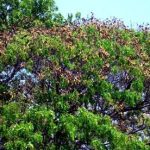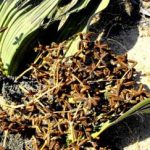TREE LIFE
May 2014
MASHONALAND CALENDAR
Sunday, 18th May (3rd Sunday): A.G.M. Mukuvisi Woodlands. The Tree Society’s Annual General Meeting will be held at the Mukuvisi Woodland Education Centre. We will meet at 9:30 a.m. and tea will be served. It would be greatly appreciated if members could bring a plate of snacks. This will be followed by the A.G.M. itself.
After the meeting, Meg Coates Palgrave will do a short talk about the Tree Society visit to Catapu in April 2012. If there is time we will have a walk in the Woodlands and at lunch time we will have a braai. Please bring your meat, drinks, cutlery, plates and chairs and anything else you might need.
Saturday 24th May (4th Saturday): Afternoon walk at Mukuvisi. Blatherwick Road entrance.
We will meet at 1430 hrs. Mark to lead
REMINDER: SUBS DUE BEFORE THE A.G.M. – NOW $10
It’s the time once again to pay your annual subscription to the Tree Society. Please note subs are now $10 per person / per family and should be paid before the A.G.M. if you would like to be included amongst the voters. Subs can be paid as follows:
- Deposit direct to our CABS account number: 1002549477 (preferable). The account name is “W.R. Clarke Tree Society”. If you do make a deposit to CABS, please make sure your name is reflected as a reference, and also advise the Treasurer (wrc@mweb.co.zw) by email of the date of your deposit
- In person to the Treasurer, Bill Clarke at Val D’Or, near Arcturus; or to the Chairman, Mark Hyde (29, Harry Pichanick Drive, Alexandra Park, Harare; tel: Harare 745263; email: mahyde@gmail.com; or to any Tree Society Committee member.
- Payments can also be accepted at any of our outings.
– Ed
TREE OF THE MONTH
Schrebera alata
Family: Oleaceae (the olive family).
Common names: Wing-leaved Wooden Pear; Wild Jasmine; Sh: Mutizi.; Nd: Umbazankezo, Umnatazule.
In Zimbabwe the olive family comprises the two Schrebera species, i.e. S. alata (along the Great Dyke) and S. trichoclada (in the Zambezi Valley). The most common member of the Oleaceae is Olea europaea which grows profusely in the Bulawayo area.
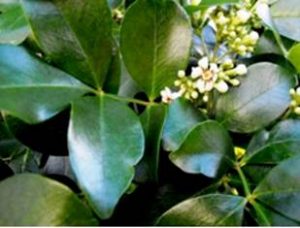
Schrebera alata
The tree was named after Johann Cristian Daniel von Schreber, a German naturalist (1739-1810), the specific name ‘alata’ means with wings, referring to the winged seeds. Schrebera alata is a lovely small evergreen tree, fast-growing and reaching between 4 and 15 m in height. The bark is a light-brown to grey. The leaves are compound and imparipinnate – they have two pairs of opposite leaves plus the terminal one. The petiole and rachis are winged. The whole leaf is shiny above and duller underneath.
The flowers are white flushed with pink, they have a long corolla tube with 5 spreading lobes, around one and a half centimetres long. The flowers are sweetly scented and bloom from September to May.
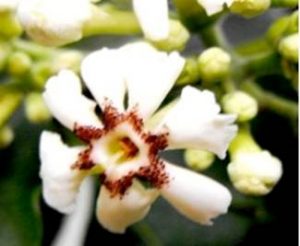
Schrebera alata flower
The fruit is a light-brown, woody pear-shaped capsule that splits in two halves to release eight winged seeds. The tree fruits from March to July. The wood is pinkish-brown and works to a fine lustrous polish, but is somewhat susceptible to borers. It has been used for furniture and various other uses but its rarity does not make it readily available.
The tree does not appear to have any medicinal properties. There is nevertheless a spittle bug, Ptyelus grossus of the Cercopidae family,
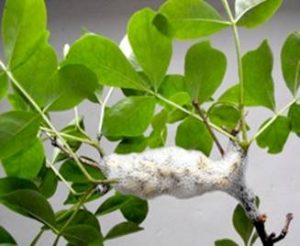
Spittle bug, Ptyelus grossus of the Cercopidae family
that likes its sap. In its larval and nymph stages it produces a foam nest around the whole colony. The foam is excreted in large quantities, causing the so-called rain under the tree. The adult spittle bugs have slate grey wings, each wing with two white and yellow patches near the outer margin. The head is white, rounded, with large dark eyes and small black and yellow marks on the forehead. Schrebera alata is not the most famous host of Ptyelus grossus, the best known ‘rain tree’ is Philenoptera violacea (formerly Lonchocarpus capassa).
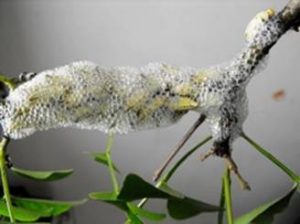
Spittle bug, Ptyelus grossus of the Cercopidae family foam
In Harare the most seen ‘rain trees’ are Tipuana tipu, an exotic Pterocarpus from South America. Tipuana tipu is now considered an environmental weed because of its ability to affect biodiversity.
Sources:
Coates Palgrave, K. 1977. Trees of Southern Africa. Struik, Cape Town.
Flora of Zimbabwe website: www.zimbabweflora.co.zw.
Goldsmith, B. and Carter, D.T. 1992. The Indigenous Timbers of Zimbabwe. Forestry Commission, Harare.
Mullin, L.J. 2006. A New Zimbabwean Botanical Checklist of English and African Plant Names. Tree Society of Zimbabwe, Harare.
Plantzafrica website: www.plantzafrica.com;
Skaife, S.H. 1953. African Insect Life. Longmans, Green & Co., London.
Van Wyk, B. and Van Wyk, P. 1997. Field Guide to the Trees of Southern Africa. Struik, Cape Town.
Wild, H. A 1972. Rhodesian Botanical Dictionary of English and Native Plant Names. Govt. Printer, Salisbury.
Photographs: JP Felu.
– JP Felu
Visit to Hippo Pools: Thursday, 27th February – Sunday, 2nd March 2014
Thursday, 27th February: Arrival
Twenty-six members of the Tree Society assembled on Thursday in the late morning at Hippo Pools for another weekend of treeing organised by Bill Clarke. After all the rain and the flooding, which we knew had affected Hippo Pools, it was a surprise to see how much the river had gone down. However, unlike our last Tree Society outing in September 2012, the river was flowing strongly and pouring over the weir just downstream from the camp.
One of the cottages, Mahogany, had been partially swept away and the banks had been eroded back several metres and were noticeably closer to the lodges. Another effect of the rains was the state of the road. This was much worse than I had expected and although not especially difficult (the main problems were fording the streams with their rocky beds) it required a lot of care and attention and it took me just under an hour to do the last 12.5 km. Others reported similar stories, but everyone made it in and, as far as I know, made it out again at the end. Once we were in the camp, we did not use our vehicles and got around on foot.
A significant plus of the rains was that the vegetation was in a very green and lush state with well-developed vleis; sadly there really wasn’t time to do justice to the many different habitats. Sadly also, Meg Coates Palgrave was unable to join us because of the unexpected death of her brother a few days before.
Since our previous visit, ZESA has been installed and although there were some brief outages, power stayed on for pretty much the whole weekend making the process of recharging batteries and cameras so much easier.
Thursday afternoon was spent settling in and getting to know again the trees of the riverine fringe of the Mazowe River. The usual very convivial evening meal was held outside under a sort of canvas tent. Both Bill and I talked about the arrangements for the weekend and what we might expect to see.
– Mark Hyde
Friday, 28th February: Morning walk led by Mark
The morning session started outside Marula Chalet, where Mark showed us the climber Entada chrysostachys which had reached a great height up the Marula tree by the chalet, Sclerocarya birrea subsp. caffra. The pods of the climber could be seen up high, possibly 30 cm long with the seeds clearly defined. A dry pod was found and Mark showed how the 1-seeded sections break away transversely leaving the rims. There was also Strychnos potatorum, family Loganiaceae, by the chalet with large glossy leaves conspicuously 3- to 5-veined from the base; veins pale green not reaching the apex which is narrowly tapering, base rounded, margins entire, petiole short. The fruit is round, smooth and fleshy, black when mature, hence the name Grape Strychnos.
Close by was a Bauhinia galpinii, still with some red flowers but not in full flower. Close to the stream coming through the camp to join the Mazowe was a tangle of Purple hook berry, Artabotrys brachypetalus, Annonaceae family, which is a strong woody climber. We saw the ‘hooks’ by which it will twine around the branches of neighbouring trees. The ‘hooks’ are flowering stalks some of which still had old flowers remaining. The green fruit forms a cluster of separate carpels, three in this instance, which become dark purple around September and are edible. Along the riverine thicket was Allophylus africanus, Sapindaceae family. The 3-foliolate leaves are up to 10 × 5 cm, margins entire broadly toothed, petiolules almost absent, petiole up to 7 cm long. Where the main vein meets the base white tufts form domatia, a home for mites. Flowers were still present, creamy yellow to greenish spike-like racemes up to 25 cm long. Climbing through this was Aristolochia littoralis, Dutchman’s pipe, with flowers and green fruit present, an introduced plant from South America.
There were large specimens of Bauhinia thonningii, also known as Piliostigma thonningii, from the Caesalpinioideae subfamily which were covered in sprays of flowers, the calyx forming a short tube covered in brown velvety hairs; petals white, crinkled and scented. The flowers are unisexual, the male flowers with 10 stamens and no ovary and female flowers with sterile stamens and ovary without a stalk. As we walked along we stopped to check the fallen flowers of many Bauhinia thonningii and were puzzled to note many more male plants than female.
Lecaniodiscus fraxinifolius, family Sapindaceae, the River litchi is another tree of this lush riverine fringe, with alternate, compound, paripinnate leaves (the same number of leaflets each side). This species was mixed in with the glossy leaves of Mimusops zeyheri, Sapotaceae family, the Common Red Milkwood, also found at low altitude hot areas. Flowers were absent but ovoid green fruit was abundant which, when it ripens, is a source of vitamin C.
An Acacia xanthophloea, family Leguminosae the Fever tree, that had been introduced was slightly out of place here but we have to learn that the term Acacia no longer applies to African species. Trees with straight paired thorns and flowers as spherical balls are now Vachellia. Curved paired thorns with flowers in spikes are Senegalia. Confusingly some trees have both curved and straight thorns, so there is more to learn about this.
Trichilia emetica, Meliaceae family, Natal mahogany, are growing along the edge of the river bank which has taken a battering in the heavy rains. Iain Jarvis told us that about two meters of the bank had washed away when the water came over the bank and flooded the camping area. Also along the river we found Antidesma venosum, Euphorbiaceae, the Tassel berry, looking very attractive with bright glossy leaves and the fruit red, turning purple. There are yellowish male flowers and reddish female flowers in spikes about 7 cm long with an unpleasant smell. Good in a garden but a male plant and a female are needed for fruiting.
There was quite a thicket of Oncoba spinosa, family Flacourtiaceae, the Fried egg flower, with its greyish bark speckled with lenticels and wicked spines about 5 cm long. Sadly we were too late in the year for flowers. Last year’s fruit was around, hard shelled and about 6 cm diameter. Nearby we found great specimens of Kigelia africana, family Bignoniaceae, the Sausage tree. The ‘sausages’ can be 1 m long and weigh 10 kg, indehiscent, meaning they do not split. Also Acacia galpinii, Monkey thorn, having two curved thorns, I suppose is now called Senegalia galpinii. The petiole and rachis have glands, a small number of pinnae (9 – 14) bearing up to 40 pairs of leaflets.
Moving on we came across Combretum adenogonium, family Combretaceae, the Four-leaved Combretum, although we kept finding 3-leaf whorls, sometimes opposite, up to 18 × 9 cm long. In autumn these trees can be picked out by their beautiful maroon foliage. Next was Terminalia sericea, Combretaceae, the Silver Terminalia. Although these leaves were not particularly silver the leaves clustered at the ends of branchlets giving it a distinctive look.
Further along the river bank we found another Acacia, Acacia, now Senegalia, polyacantha, the White thorn. Its paired hooked thorns are dark brown, the white referring to the trunk. Then came Euclea schimperi, family Ebenaceae, the Bush guarri, This can be confused with E. divinorum: both are shrub like, similar leaves, leathery, shiny and wavy, without hairs, but E. schimperi leaves are bigger. Nearby we found Friesodielsia obovata, family Annonaceae, Dwaba berry or Monkey fingers. This was scrambling, typical of low altitude riverine woodland. The leaves are held in a horizontal plane, alternate, simple, rounded apex and base, about 11 cm long but leaves also much smaller. The veins are pale and conspicuous both above and below. Flowers were not present but we saw the distinctive fruit with up to 9 separate monocarps, rounded, up to 7 cm long. Sadly there were no red fruits, which I have enjoyed before.
Philenoptera bussei, family Papilionoideae. Formerly Lonchocarpus bussei, this is a slender tree similar to Philenoptera violacea, which was also present, but bearing more leaflets and a terminal leaflet. P. violacea has one to two pairs opposite leaflets but terminal leaf is large and rounded, having hair like stipules. P. violacea has a rounded crown with a heavier look than bussei.
Canthium huillense, now known as Psydrax livida, family Rubiaceae, we saw as we moved a little way from the river, with its horizontal branches from the pale smooth bark, bright dark green leaves and there were still some creamy tipped green flowers. Nearby was Commiphora mollis, family Burseraceae, the Soft-leaved Commiphora. Its smooth grey bark is distinctive, leaves with four pairs of leaflets and a terminal leaf, the lower pair smaller than the top. Leaves were already tending to autumn yellow. The fruit is round, about 10 mm across.
Acacia nilotica, the Scented Pod, has spines, long and straight about 6-8 cm long, with flowers in yellow balls, therefore it is now Vachellia. The attractive seed pods constrict between the seeds like beads, which break up into single-seeded segments when dry.
The next Acacia, Acacia, now Senegalia, nigrescens, the Knob thorn, was an impressive specimen, knobs all too obvious, also small hooked paired black prickles. The flowers (white in 10 cm-long spikes) were not present but seen before the leaves appear are a sight to see. The leaves are the biggest of the Acacias.
We took a break for tea after about two hours and then proceeded over the swing bridge which was held fast at the base of a large Lannea stuhlmannii, family Anacardiaceae, False marula which went up straight and tall. Above the thicket the leaves could not be seen but this species has an attractive bark, light brown, flaking to show the orange underbark.
Many red-orange seedpods were lying about on the ground with the seeds popped out. Monkeys and hornbills are fond of this fruit and on tasting it I found it was slightly sweet and pleasant. I then noted a large woody-looking vine trailing up into the trees and looping to the ground, a perfect jungle gym. This was the bearer of the fruit and Iain Jarvis said on cutting a truncheon and blowing hard while holding a cupped hand below, this would result in a handful of clear water, hence the name Water vine, Cissus integrifolia.
A Tamarindus indica, Caesalpinoideae subfamily, was enjoying the deep alluvial soil, the bark, pale grey, tending to be rough. Its leaves are alternate, compound with 10-18 pairs of opposite leaflets. The fruit was green, indehiscent, about 15 cm long, and the pod constricted between each seed.
As we walked from the floodplain into miombo type woodland, we found Diospyros senensis, family Ebenaceae, the Peeling bark Diospyros. This is a spiky shrub, its grey peeling bark revealing smooth cream patches and has a rigid and slightly fluted appearance. On a stony hillside we found Ormocarpum kirkii, family Papilionoideae, the Small caterpillar pod, leaves clustered on the branchlets, 13 pairs of leaflets and a terminal leaflet, with the edges of the leaves tightly rolled under. It had fruit, very small hairy pods still hidden in the dry petals.
Next was Dalbergiella nyasae, family Papilionoideae, the Mane pod. This tree is seen all along the escarpment on the Kariba road, distinctive with tinges of brown hairs, leaves bunched at the branch ends. The pink/mauve pea-shaped flowers are profuse in October with sprays up to 25 cm long. The pods, oblong and velvety with a fringe around the pod, are unusual.
Catunaregam taylorii, family Rubiaceae, Spiny bone-apple, used to be Xeromphis obovata. Growing on the stony hill slope, this spiny shrub has mottled grey bark and leaves in clusters, velvety on both sides. It was in green fruit, spherical, 2.5 cm, becoming hard when dry.
Then we came across Commiphora mossambicensis, family Burseraceae, the Pepper-leafed Commiphora, typical of low altitude, dry hillsides. This tree has a grey-pink peeling bark and no spines. The leaves are trifoliate, the leaflets large almost circular 8 × 7 cm with a short point. They are shiny and fresh green with a peppery smell. Nearby was Diplorhynchus condylocarpon, family Apocynaceae, the Rubber tree. This tree grows all over the hillsides in open woodland, the grey brown bark can look corky and flakes in squares, while the opposite simple leaves are shiny and wavy, with slender petioles. The oblong fruits, about 5 cm long with tips curved down, are in pairs. The tree has a milky latex that can become rubbery when worked with the fingers and is sometimes used as a glue.
Diospyros kirkii, family Ebenaceae, the Pink Diospyros, is a small tree of open woodland with rough grey bark. The leaves are almost round 14 × 8 cm, having blotchy dark, markings giving a dirty appearance, while the younger leaves are covered in pink hairs. The fruit is good to eat but we were too early for ripe fruit. Then came Dalbergia melanoxylon, family Papilionoideae, the characteristic Zebra wood. This was a straggling tree on the stony hillside, with smooth grey spiny bark and several stems. The leaves are clustered on tough branches with up to 13 opposite to alternate leaflets and a terminal leaflet. The dark green, oval leaves vary in size from 2 to 3 cm. This is a hard wood with purple heart wood, good for walking sticks.
Our second Terminalia of the walk, Terminalia stenostachya, Combretaceae, the Rosette-leaved Terminalia, has a rough bark with vertical furrows and leaves that are gathered into rosettes, oval, puckered and heavily veined with brown hairs. The fruit is a conspicuous red, appearing from the leaf clusters. Then Acacia goetzei, hooked prickles and cream spikes for flowers, therefore Senegalia, for the new name, the Purple pod. The bark is brown and rough. 3 to 10 pairs of pinnae, each bearing up to 8 to 10 pairs of leaflets. The leaflets are 3 to 17 × 1 to 7 mm in size, the apex rounded with a tip. This species can be mistaken for nigrescens but the leaves are more numerous and smaller.
Following this we came across Canthium frangula, family Rubiaceae, the Pink-fruited Canthium. This was more of a shrub, with grey brown bark and long branches with paired straight spines about 2 cm long. The leaves are clustered on small side shoots and the pink oval fruit is held on fine stems. Our next specimen was Diospyros squarrosa, the Rigid star apple. This is a straggling small tree with obovate leaves, 5 to 9 × 3 to 5 cm, that are dull green on both surfaces with hairs mostly along the midrib. The spherical fruit, 2 cm in diameter is fleshy and pleasant to eat. The persistent calyx is rigid and leaf like (hence the specific name) and is bent back beneath the fruit.
On our final stretch we came across Pterocarpus brenanii family Papilionoideae, the Large-leaf bloodwood. This is not a large tree, but common in the woodland of the hot dry low altitude. It has grey-brown bark with scaling in vertical strips; leaves of 5 to 7 leaflets that are large, almost circular and 12 × 12 cm or more, with a rather square apex and a square base. It also has conspicuous large leafy stipules up to 2.5 × 1.8 cm against the stem which persist for a time. We never saw the yellow flowers but the fruit was abundant – large flattened pods, 10 × 7 cm, the seed in the middle of a stiff membrane. This was a first for me.
We were by now up by the hide overlooking the dam that spills into a pool built by Iain Jarvis, perfect for bathing and shaded by a large Brachystegia tamarindoides, sub-family Caesalpinioideae, Mountain Acacia. It was puzzling because it had all the characteristics of a tamarindoides but the leaflets were reduced to 7 pairs, this we noticed on all the specimens we saw. In this rocky area under a canopy of trees there were many Euphorbia cooperi, family Euphorbiaceae, the lesser candelabra, a spiny succulent as well as Commiphora africana, family Burseraceae, the Poison-grub Commiphora, a small tree with smooth grey bark, that is succulent-like and exuding pale gum if gouged with a stone. The leaves are trifoliate and spines occur on the branchlets. There is a beetle that feeds only on this tree and the larva was used by the Bushmen to make arrow poison.
There were still more species up away from the river, really such a diverse vegetation in a relatively small area, and still the list could go on for this morning session: Stereospermum kunthianum, family Bignoniaceae, the Pink Jacaranda; Ziziphus mauritiana, family Rhamnaceae; Dalbergia arbutifolia, sub-family Papilionoideae; Steganotaenia araliacea, family Apiaceae, the Carrot or Pop-gun tree, with its crushed leaves smell of carrots and the hollow stems are ideal to blow something down like a small seed or stone and inflict pain! And lastly Monodora junodii, family Annonaceae, the Green Apple.
So the morning ended and we returned for drinks and lunch, well-earned as after such an abundance of species my mind was quite boggled.
– Anne Butler
TO BE CONTINUED…….
Xerophytica—Plants for our future
The Aloe, Cactus and Succulent Society of Zimbabwe has in the past organised two highly successful international congresses: Aloe 75 and Aloe 88. Some 25 years have passed since our last such event, and, returning to our educational mandate, the Society is now organizing a new international event. Our theme is: Xerophytica—Plants for our future.
The African/Madagascan region is home to more than half of the world’s succulent plant species. Humanity has been fascinated by succulents for millennia—for their medicinal and cosmetic uses, the colour they bring to landscapes, and the scientific questions they raise. More recently, succulents have also attracted the serious interest of collectors, and they are playing an increasingly important role in horticulture and landscaping, particularly with changing climatic patterns.
The congress will serve three main purposes: 1) to report on recent research and update scientific information; 2) to popularise succulents—broadly defined—as plants for both the home gardener and the commercial grower, and 3) to examine issues around the sustainable use of southern African flora and raise awareness of the threats to species survival posed by habitat loss. And, of course, for many there will be the enjoyment of renewing old acquaintances. The presentations—all accompanied by visual illustrations—will stretch across plant scientists worldwide, naturalists, serious hobbyists, plant photographers, plant breeders, landscapers, and others.
The formal programme will take place in Harare on Friday and Saturday, 20 and 21 June. Optional post-congress tours begin on Sunday, 22 June with a picnic outing to the Ewanrigg Botanic Garden, gifted to Zimbabwe by Harold Basil Christian. On the Monday, there will be a full-day 4×4 trip to the Great Dyke, an area known for its diverse flora and home to Zimbabwe’s signature Aloe ortholopha—and many other succulents. The remainder of the week will be filled with a 4×4 tour to the Eastern Highlands and/or southeast Zimbabwe depending upon the preferences of participants. Possibilities include the Bvumba Botanic Garden and the Chimanimani Mountains, where we feel sure there are species yet to be identified, and the drier habitats south of Chipinge. The Society is happy to assist in arranging pre or post congress visits to popular destinations, such as Great Zimbabwe and Victoria Falls.
It has been far too many years since a congress of this nature was organised in Zimbabwe. We hope that you will be able to participate.
Preregistration and prepayment of congress fees are required. Full details and registration forms will be found on the Society’s website and Facebook pages.
The Aloe, Cactus and Succulent Society of Zimbabwe, PO Box CY300, Causeway, Harare, Zimbabwe. aloe143@gmail.com; www.aloesocietyzim


